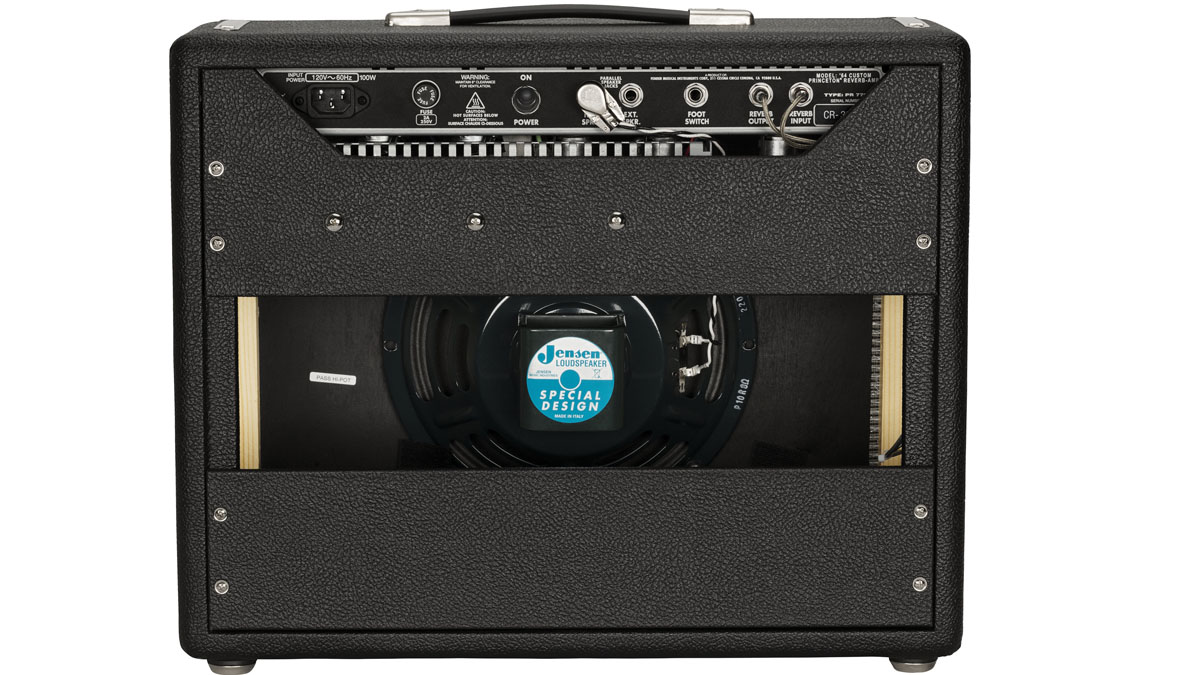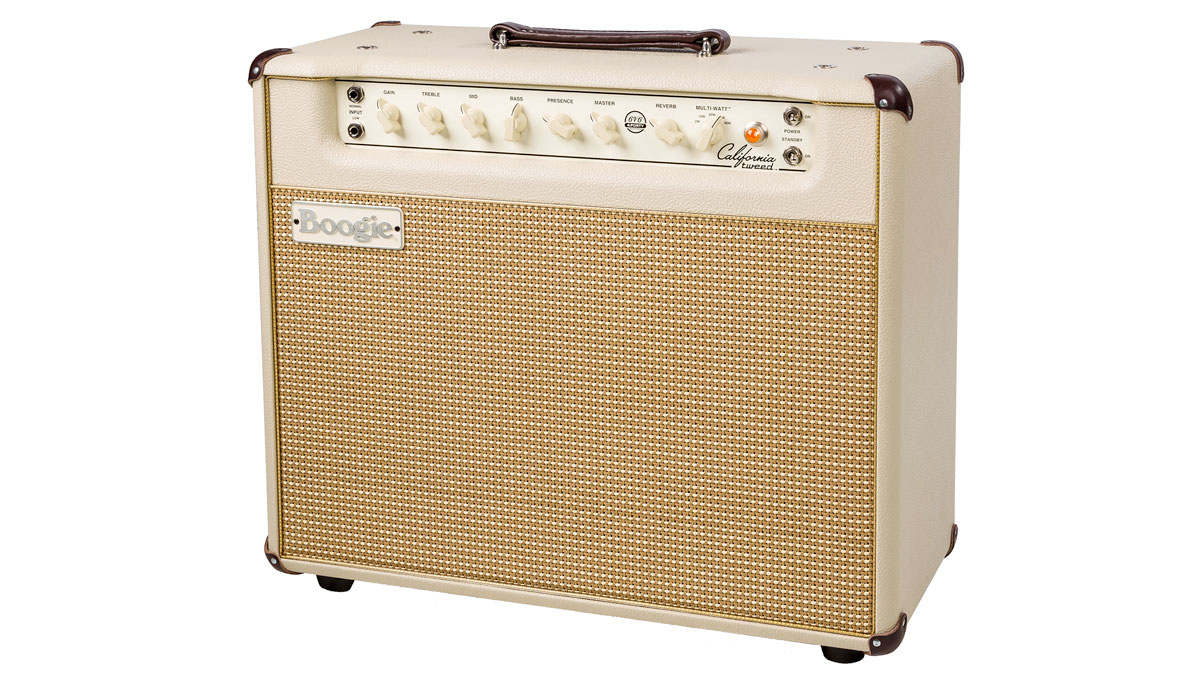MusicRadar Verdict
The year is 2020, and don't we know it, but thanks to Fender you can get a brand new hand-wired Princeton that'll turn the clock back to '64 with some of the sweetest clean tones you'll hear, plus reverb and tremolo to die for.
Pros
- +
Hand-wired, impeccable build.
- +
Immaculate clean tones, and classic American drive.
- +
Footswitchable tremolo and tube-driven spring reverb
- +
The archetypal studio or small-gig combo.
- +
It's pricey, but a lot cheaper than a vintage model.
Cons
- -
The overdrive only really gets going once you crank it.
MusicRadar's got your back
What is it?
The Fender Princeton needs no introduction. As guitar amplifiers go, it is widely regarded as the go-to choice of studio players and one of the best perfect compact combos for small gigs.
Anyone who is anyone has played a Princeton at some time. It's got the pristine clean tones, the musical splash of spring reverb, the lush warble of tremolo... Even the proportions seem just right, with its 12-watts a manageable amount of power to deal with in a variety of situations. It takes pedals well, too. There is a lot to like.
But not all are created equal, and one of Fender's most exciting announcements at this year's NAMM was the unveiling of the '64 Custom Princeton Reverb. Featuring a hand-wired AA764 circuit with tube-driven spring reverb and tremolo, the '64 Custom is a high-end Princeton that doesn't come cheap, but it is nonetheless cheaper than a mint-condition vintage Princeton – and a heck of a lot easier to find.
Long-time Princeton fans will recognise the spec. It is, of course, a single-channel affair, 12-watts, a black-fronted control panel featuring volume, treble, bass, reverb, speed and intensity knobs – the latter two for the "vibrato," a bias-modulating tremolo that's musical and dynamic.
There are two instrument inputs, normal and normal and -6dB, and round the back of the amp you'll find inputs for a footswitch for the reverb and tremolo, the on/off switch, and a 1/4" output for an extension cabinet. The cabinet is lightweight solid pine and houses a 10” Jensen Alnico P10R speaker, which tends to play a little warmer than the ceramic speakers of the originals.
Under the hood, you'll find a power amp that's driven by a pair of 6V6s. There are three 12AX7s and one 12AT7 preamp valves, and a 5AR4/GZ34 rectifier tube. The extra gain stage of the Princeton Reverb has tended to make it a more popular option than the regular Princeton.
The division of labour for the 12AX7s is interesting, with one-and-a-half driving the preamp, the other half feeding the split inverter, and the third driving the long-spring reverb tank.
Want all the hottest music and gear news, reviews, deals, features and more, direct to your inbox? Sign up here.
Other electrical features to get the cork sniffers a flutter – besides the Palm D'Or-worthy point-to-point wiring – include the Fender Vintage Blue tone capacitors. Completing the old-school recipe is the extra-heavy textured vinyl covering and a silver grille cloth that's been very subtly aged.
There's no question, the '64 Custom Princeton Reverb looks the business.


Performance and verdict
There's no question Fender has gone to town on the '64 Custom Princeton. It really looks like it prefigures the colour TV era let alone that it has been manufactured in the internet age. The updated speaker is a sound choice, for the ceramic magnet speakers of the original run were arguably a little harsher-sounding.
Indeed, tone-wise, the '64 Custom Princeton is truly superlative Fender amp, and for players of a certain vintage it might well send them off into a Proustian reverie once they wrangle with its sparkle. The cleans are just so pristine. There's a depth and a cast-iron low-end to them that belies the 10" speaker size. For a 12-watt amplifier, there is an abundance of clean headroom.
All of this glassy brilliance is only enhanced when you dial in some reverb. The sound of tube-driven long-spring tank reverb has been replicated to an uncanny degree of success by effects pedals manufacturers but there is no substitute for the real thing.

• Mesa Engineering California Tweed 1x12
Off-the-scale tone and response – a fitting 50th anniversary model from the original boutique amp builder. It's expensive, but worth every penny.
• Fender Blues Junior IV
If you are a budget-conscious tone hound on the look out for spanky Fender cleans with a warm crunch to chase it, the Blues Junior IV is always a good bet.
Set low, the reverb simply adds depth, a musical sense of space, but once you get a little bolder with it all that splashy surf tone washes ashore. This is the sort of environment that sees your single-coil guitar of choice evoke Ennio Morricone; so strong is this vibe, you wouldn't be too surprised to look over your shoulder to find Clint Eastwood narrowing his eyes at you.
The tremolo, of course, is to spring reverb what a cold beer is to a sunny day. You can use it to add some subtle texture, a little bit of movement, some moving depth to your tone, or you can crank it and get more extreme effects; either way, it works with your playing, stepping back in the mix when you are playing hard and loud and reasserting itself as the note decays. It is so musical.
That's the thing about the '64 Custom Princeton, its tones support your playing, and the magic is not restricted to the sparkly bounce of Fender cleans. With volume past noon, you'll start to get some organic crunch in the signal, a chewy breakup that's ideal for blues. With single-coils, take it past 7 on the dial and you'll really start getting some hair on it.
There are some players who would swear by keeping the Princeton dimed and rolling back the volume control of your guitar to clean the tone up.
At 10, and we encourage you to play it at 10, the tone is full-on saucy crunch. But at no point does the definition begin to slur. The bottom-end holds up. There's a ringing clarity, the sound of the Princeton at full bloom. There are some players who would swear by keeping the Princeton dimed and rolling back the volume control of your guitar to clean the tone up. That, in effect, makes it a two-channel affair.
But however you configure the Princeton, there's so much classic American Fender tone to explore, with the footswitchable spring reverb and tremolo another pseudo channel switcher, if we were to think of the channels as "wet" and "dry".
Again, it says '64 on the tag, it sounds like a mid-'60s amp, and it is built as one, but it is 2020, the Golden Age of Effects Pedals, and so it's also worth noting that this might be a vintage-style combo but makes for a superlative pedal platform, a super-sweet bass upon which to build an empire of tone.
MusicRadar verdict: The year is 2020, and don't we know it, but thanks to Fender you can get a brand new hand-wired Princeton that'll turn the clock back to '64 with some of the sweetest clean tones you'll hear, plus reverb and tremolo to die for.
Hands-on demos
Fender
Max Guitar
Guitar
Premier Guitar
Casino Guitars
Specifications
- TYPE: Valve combo
- OUTPUT: 12 watts at 8 ohms
- SPEAKER: 1 x 10” Jensen P10R Alnico
- VALVES: 1 x 12AT7, 3 x 12AX7 in preamp; 2 x 6V6 in power amp; 1 x 5AR4 in rectifier
- CONTROLS: Volume, Treble, Bass, Reverb, Speed, Intensity
- CABINET: Solid pine with extra-heavy textured vinyl cover
- SOCKETS: Input jack, extension cabinet, footswitch for reverb/tremolo (included)
- WEIGHT: 32 lbs (14.5kg)
- DIMENSIONS: 416mm (h) x 508mm (w) x 239mm (d)
- CONTACT: Fender
MusicRadar is the number one website for music-makers of all kinds, be they guitarists, drummers, keyboard players, DJs or producers...
- GEAR: We help musicians find the best gear with top-ranking gear round-ups and high-quality, authoritative reviews by a wide team of highly experienced experts.
- TIPS: We also provide tuition, from bite-sized tips to advanced work-outs and guidance from recognised musicians and stars.
- STARS: We talk to musicians and stars about their creative processes, and the nuts and bolts of their gear and technique. We give fans an insight into the craft of music-making that no other music website can.


